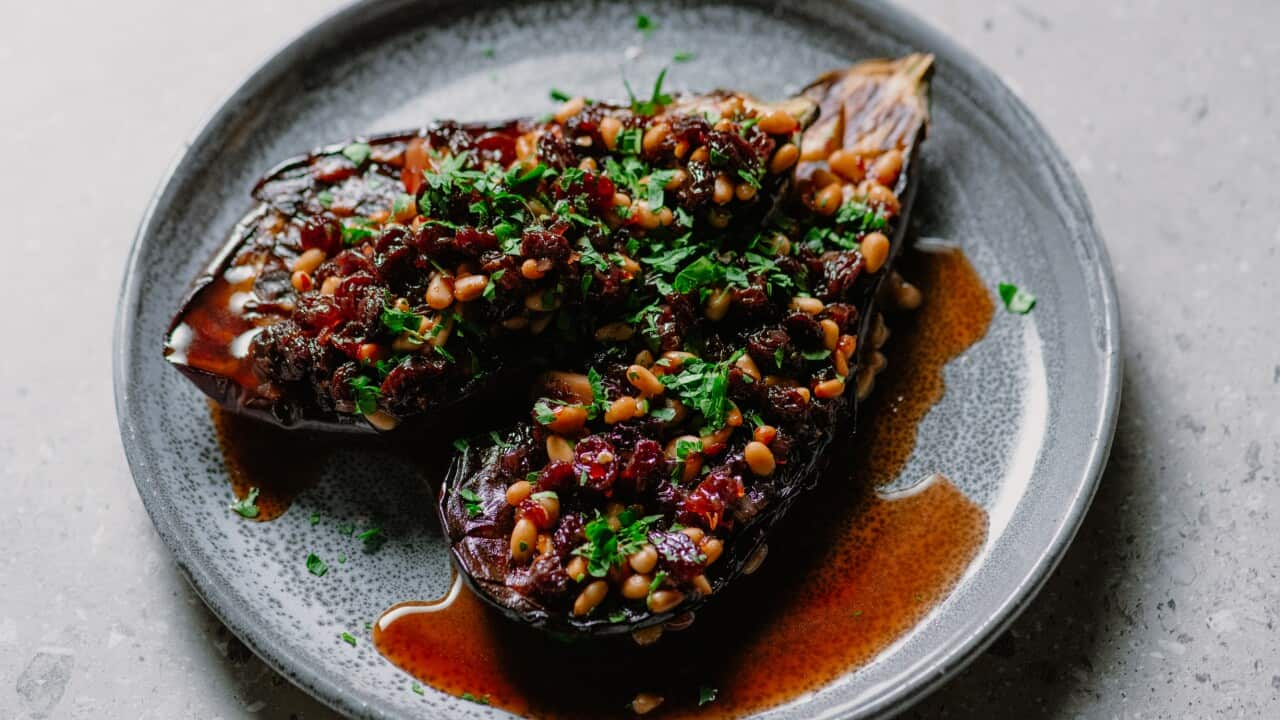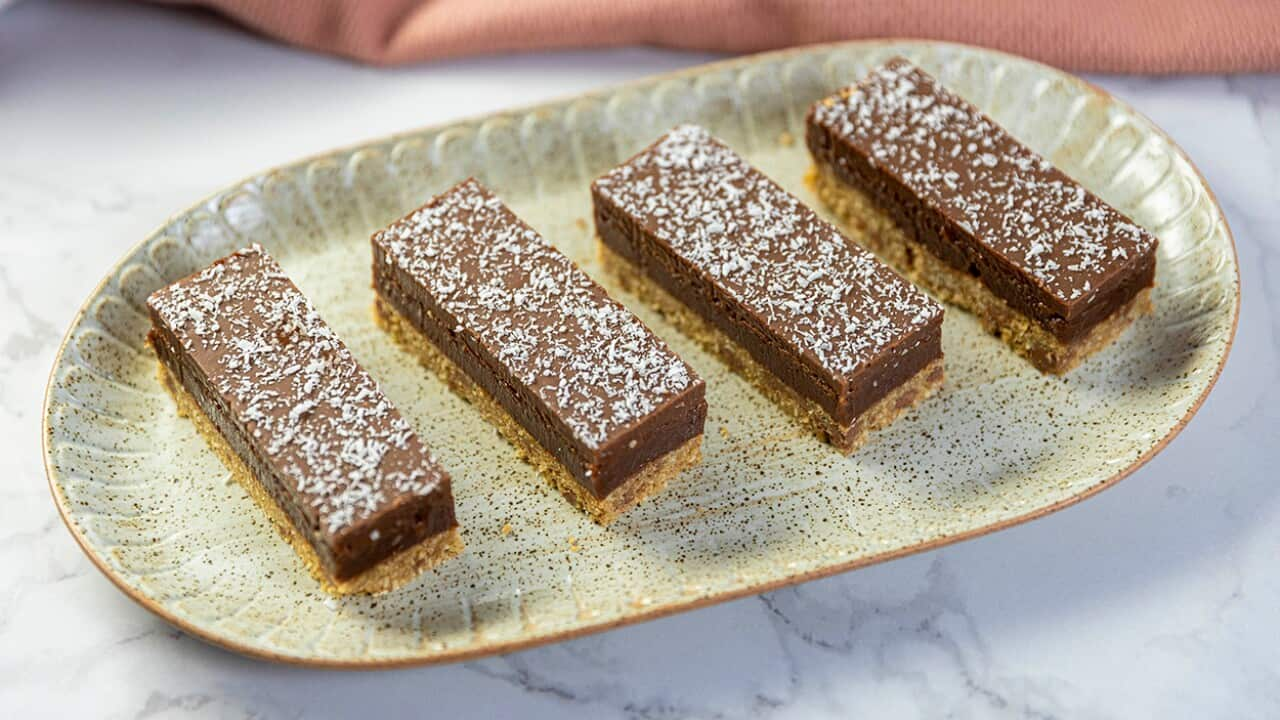While Valentine’s Day is the busiest time for florists across Australia, in Japan, the chocolatiers and the sellers of cacao delights face the biggest test of the year.
From convenience stores to department stores, Valentine’s Day chocolates fill the shelves across Japan.
Department stores hold "chocolate expos" from mid-January to showcase the range of sweets available for that year.
History of Japan's Valentine's Day
Although there are several theories about how Japan’s chocolate-giving tradition on Valentine’s Day began, one of the oldest dates goes back to 1932, to a Western-style confectionery store in Kobe, where chocolate-giving on Valentine’s Day was first advocated.
As more and more confectionary companies saw Valentine’s Day as an opportunity to sell their chocolates, the culture of “women gifting chocolates to men” became firmly established in the country through the marketing strategies of these companies.
According to the Japan Anniversary Association, the economic impact of Valentine’s Day in Japan has constantly topped 120 billion yen for the past decade.
Perth’s chocolatier Yuki Nakamura who has 20 outlets across Japan, says Valentine’s Day makes up 80 per cent of the store’s annual income, compared to just 3 per cent in their Perth store.
Ms Nakamura visits all the stores in Japan during this time to ensure everything is running as planned. For Ukyou Forsyth, who grew up in Japan with seven other siblings (one girl and six boys), Valentine's Day was always eventful.
For Ukyou Forsyth, who grew up in Japan with seven other siblings (one girl and six boys), Valentine's Day was always eventful.

Source: Yuki Nakamura
"We always competed with each other for the number of chocolates gifted," Ukyou Forsyth tells SBS Food.
"My older brother always received more chocolates than he could eat, so he would pass them on to the younger brothers or my sister, who loves chocolates."
Ukyou was "surprised" when he learnt that the culture was the opposite in Australia, with men giving Valentine's Day gifts to women instead.
"Either way, Valentine's Day is still romantic, so even if we don't get chocolates, it is definitely a special day for the Forsyth family."
READ MORE

12 date night dishes to impress
The shift in choco trend
A decade ago, Valentine’s Day was synonymous with women gifting chocolates to men, with the chocolates categorised as honmei-choco or giri-choco.
Honmei-choco is given to your romantic interest like boyfriends, husbands, and your potential love interest, while giri- choco, otherwise known as obligatory chocolates, are gifted to co-workers, colleagues or male friends, often as an expression of gratitude.
While these traditions still exist, there has been a shift in the market more recently, says Ms Nakamura.
“Lots of people are now buying for themselves (jiko-choco) or for their friends (tomo-choco). It has become more prominent, ” she tells SBS Food.
According to a survey conducted by market research company Intage last year, over 80 per cent of women did not want to partake in the obligatory chocolate tradition, saying it has become not only expensive but too much of a formality as well. Over 50 per cent of the male responders also said they were not happy with such a tradition.
Celebration of the artistry and their industry
While the market may be shifting, Ms Nakamura says for Chocolatiers around the country, Valentine's days have been, and always will be, a "celebration of the artistry and their industry".
"There are so many chocolatiers and competition in Japan. The market is saturated. So, to differentiate from other shops and brands, you are expected to do something new, something special."
"This is a good opportunity to express my skill and the message that I want to convey." While chocolates are the most popular gifts on Valentine's Day, they are certainly not the only ones.
While chocolates are the most popular gifts on Valentine's Day, they are certainly not the only ones.

For Perth based chocolatier Yuki Nakamura, Valentine’s Day makes up 80 per cent of the her Japan store’s annual income. Source: Yuki Nakamura
According to , which partners with some of the biggest online markets in the country, coming second to chocolates on the Valentine's Day present ranking are socks, followed by the branded key case (3rd), handkerchief (4th) and boxer shorts (5th).
What is White Day?
For the Forsyth's boys, while Valentine's Day brought in much excitement, they would then have to brace for White Day, a month after Valentine's Day on 14 March, when recipients of the chocolates return the favour and give back a gift.
A tradition which began in Japan in the 80s, those who received honmei-choco are expected to give back gifts two or three times the value they received, while those given giri-choco, give the same value or more.
"We didn't have any allowance, so mum bought a lot of sweets for us to hand out," says Ukyou.
Today, the tradition is also practised in other parts of East Asia, including China, South Korea, Taiwan and Vietnam.





